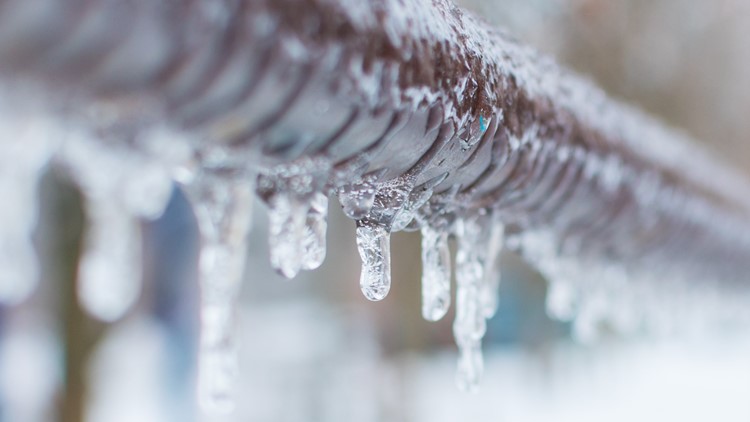Essential Tips to Protect Against Frozen Plumbing in Cold Weather
Essential Tips to Protect Against Frozen Plumbing in Cold Weather
Blog Article
We have stumbled on the article on Preventing and dealing with frozen pipes directly below on the internet and figured it made sense to share it with you on my blog.

Winter can wreak havoc on your pipes, especially by freezing pipelines. Right here's exactly how to avoid it from occurring and what to do if it does.
Introduction
As temperature levels drop, the threat of frozen pipes rises, possibly causing pricey repair services and water damage. Understanding exactly how to avoid icy pipes is important for house owners in chilly environments.
Understanding Frozen Pipelines
What triggers pipelines to freeze?
Pipelines ice up when revealed to temperatures listed below 32 ° F (0 ° C) for expanded periods. As water inside the pipes ices up, it increases, taxing the pipeline wall surfaces and possibly triggering them to break.
Dangers and problems
Frozen pipes can lead to water disruptions, building damages, and expensive repair work. Ruptured pipes can flood homes and create extensive structural damages.
Signs of Frozen Pipes
Determining icy pipelines early can prevent them from rupturing.
Exactly how to recognize icy pipelines
Look for reduced water flow from taps, unusual odors or noises from pipes, and visible frost on subjected pipelines.
Avoidance Tips
Insulating susceptible pipes
Wrap pipelines in insulation sleeves or utilize heat tape to secure them from freezing temperatures. Focus on pipes in unheated or outside areas of the home.
Home heating strategies
Maintain interior spaces appropriately warmed, especially locations with pipes. Open up cabinet doors to permit warm air to circulate around pipes under sinks.
Securing Outdoor Plumbing
Garden hoses and outdoor faucets
Disconnect and drain garden pipes before winter season. Set up frost-proof spigots or cover outside taps with insulated caps.
What to Do If Your Pipelines Freeze
Immediate actions to take
If you presume icy pipes, keep faucets available to relieve pressure as the ice thaws. Make use of a hairdryer or towels soaked in hot water to thaw pipelines gradually.
Long-Term Solutions
Structural modifications
Take into consideration rerouting pipelines away from outside walls or unheated areas. Include additional insulation to attic rooms, basements, and crawl spaces.
Updating insulation
Buy high-grade insulation for pipes, attics, and wall surfaces. Appropriate insulation aids keep regular temperature levels and lowers the threat of icy pipes.
Conclusion
Avoiding icy pipelines calls for proactive measures and fast feedbacks. By comprehending the causes, indicators, and safety nets, property owners can secure their plumbing during cold weather.
5 Ways to Prevent Frozen Pipes
Drain Outdoor Faucets and Disconnect Hoses
First, close the shut-off valve that controls the flow of water in the pipe to your outdoor faucet. Then, head outside to disconnect and drain your hose and open the outdoor faucet to allow the water to completely drain out of the line. Turn off the faucet when done. Finally, head back to the shut-off valve and drain the remaining water inside the pipe into a bucket or container. Additionally, if you have a home irrigation system, you should consider hiring an expert to clear the system of water each year.
Insulate Pipes
One of the best and most cost-effective methods for preventing frozen water pipes is to wrap your pipes with insulation. This is especially important for areas in your home that aren’t exposed to heat, such as an attic. We suggest using foam sleeves, which can typically be found at your local hardware store.
Keep Heat Running at 65
Your pipes are located inside your walls, and the temperature there is much colder than the rest of the house. To prevent your pipes from freezing, The Insurance Information Institute suggests that you keep your home heated to at least 65 degrees, even when traveling. You may want to invest in smart devices that can keep an eye on the temperature in your home while you’re away.
Leave Water Dripping
Moving water — even a small trickle — can prevent ice from forming inside your pipes. When freezing temps are imminent, start a drip of water from all faucets that serve exposed pipes. Leaving a few faucets running will also help relieve pressure inside the pipes and help prevent a rupture if the water inside freezes.
Open Cupboard Doors
Warm your kitchen and bathroom pipes by opening cupboards and vanities. You should also leave your interior doors ajar to help warm air circulate evenly throughout your home.

Do you like reading about Helpful Tips to Prevent Frozen Pipes this Winter? Leave a remark further down. We'd be delighted to see your insights about this blog posting. In hopes that you come back again later on. Do you know anybody else who is fascinated with the niche? Please feel free to share it. Kudos for being here. Return soon.
About This Report this page